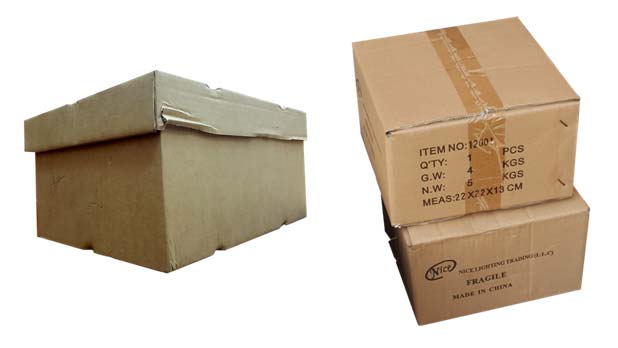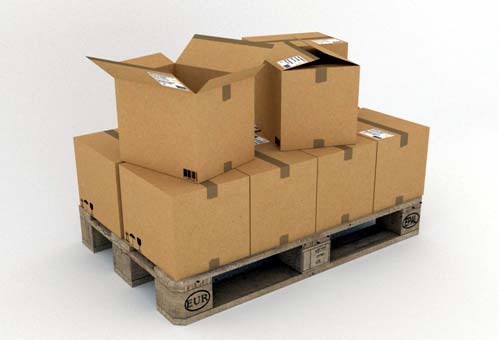A long move can be a logistical nightmare. To mitigate the risks of something going wrong during cross-country moving, follow the steps below to make sure you choose the right movers to transport your stuff to your new home.

1. Ask Around for Recommendations
There’s nothing like an honest recommendation from someone you trust. Ask co-workers and friends, real estate agents, and your neighbors for reputable movers near your home. Look in the phone book as well, so that you leave no stone unturned.

The plan is not to get an estimate from your peers but to have a bunch of names with which to start before narrowing down to the perfect cross-country moving company like American Van Lines to handle your big move.
Bigger does not necessarily mean better. So, don’t automatically trust big names. Run away from websites that offer to mediate or “find you a mover.” Avoid taking up household goods brokerage services on their offer to find a mover for you. These are not bound by the same regulations as movers.
You want to find and deal with your movers yourself. By so doing avoid numerous scams associated with this particular service.
2. Do Some Surface-level Screening

Armed with your recommended list, it’s time to do some surface-level screening in order to identify the real contenders. Check with the Better Business Bureau by phone or through their website for some credibility stats. Or, email the American Moving and Storage Association (AMSA) to see if a particular mover is a member. Being a member means that the company abides by the association’s published tariffs and arbitration program. AMSA membership is voluntary. However, a lack of membership should not count as a strike if a company checks other key points.
Other sites that can help you with a quick background check include MovingScam.com, which has a blacklist of companies with a history of customer complaints. Ripoff Report is another site that has a searchable database.
3. Create a Short List of Companies for In-home Estimates

Reach out to the moving companies on your shortlist. Ask for an in-house estimate. Do not agree to an estimate over the phone. Because you’re cross-country moving, the companies will give you a binding estimate or a binding-not-exceed estimate, which is even better.
- A binding estimate on your contract with a mover means that you have a fixed price for the move and any extras and services. Additional services like unpacking come with an extra cost that must be paid within 30 days of delivery.
- A binding-not-to-exceed estimate ensures that you will not have to pay for any extra services. You pay only what the estimate stipulates.
Some interstate movers will charge you for an estimate but most won’t. Usually, any estimate will depend on the length of the journey.
4. Show the Estimator Everything

Don’t leave anything out — go to all the closets, attic, and backyard. Show them everything you want to be moved. The reason for this is simple. If on moving day the foreman thinks you have presented significantly more stuff than you revealed when the estimate was given, they can challenge the initial estimate before everything is loaded on the truck — not after.
At that point, he can’t force you to pay the higher price. But you can’t force him to carry your goods either. At that point, you will probably be short of options, especially if most of your things are on the curb!
Other advantages of insisting on an in-house estimate include being able to tell the movers about any special conditions of the house you are moving to. Things like stairs or the distance between the curb and the nearest door. Also, you can learn all the details you can about the company in question like:
- Full name of the company and any other name it uses
- Names and contact information for any references
- Telephone number, email, website, and physical address of the company
- S. Department of Transport and Motor Carrier licenses
- The USDOT booklet labeled “Your Rights and Responsibilities When You Move,” which the law mandates be handed to you by any interstate mover.
5. Compare the Estimates You Receive
When cross-country moving, it’s very important to keep your costs down. As your estimates pour in, you want to view them side-by-side and pick the most competitive offer. But, remain wary of any estimate that is significantly lower than the others as you get what you pay for when it comes to movers.
Look at the high bids and try to see where the extra costs are coming from. If there is anything you don’t understand, you would do well to ask using the information you collected. Don’t shy away from negotiating to get a better price.
6. Review Chosen Movers in Detail

With the information on your chosen movers, you can do in-depth research. You want to make sure the companies are registered in your state. Take note of how long they have been in business. You can retrieve this information from your state’s secretary of state office. If there is no searchable database online for businesses, get in touch through the government pages of the phone book.
Rest assured that there are movers who operate without the legal authority to do so. Make sure your contenders comply by going to the website of the Federal Motor Carrier and Safety Administration (FMCSA) and entering their USDOT number or motor carrier number. This should give you plenty of relevant information about the company in question. Including if it is legally authorized to operate or not.
7. Select Your Mover

After going through your checks, select a mover from your list. Confirm the date and details of your move. Then get a signed order of service and a bill of lading.
On the moving day, make sure you provide specific directions to your new house and ask for a number with which you can reach the movers throughout the move.



